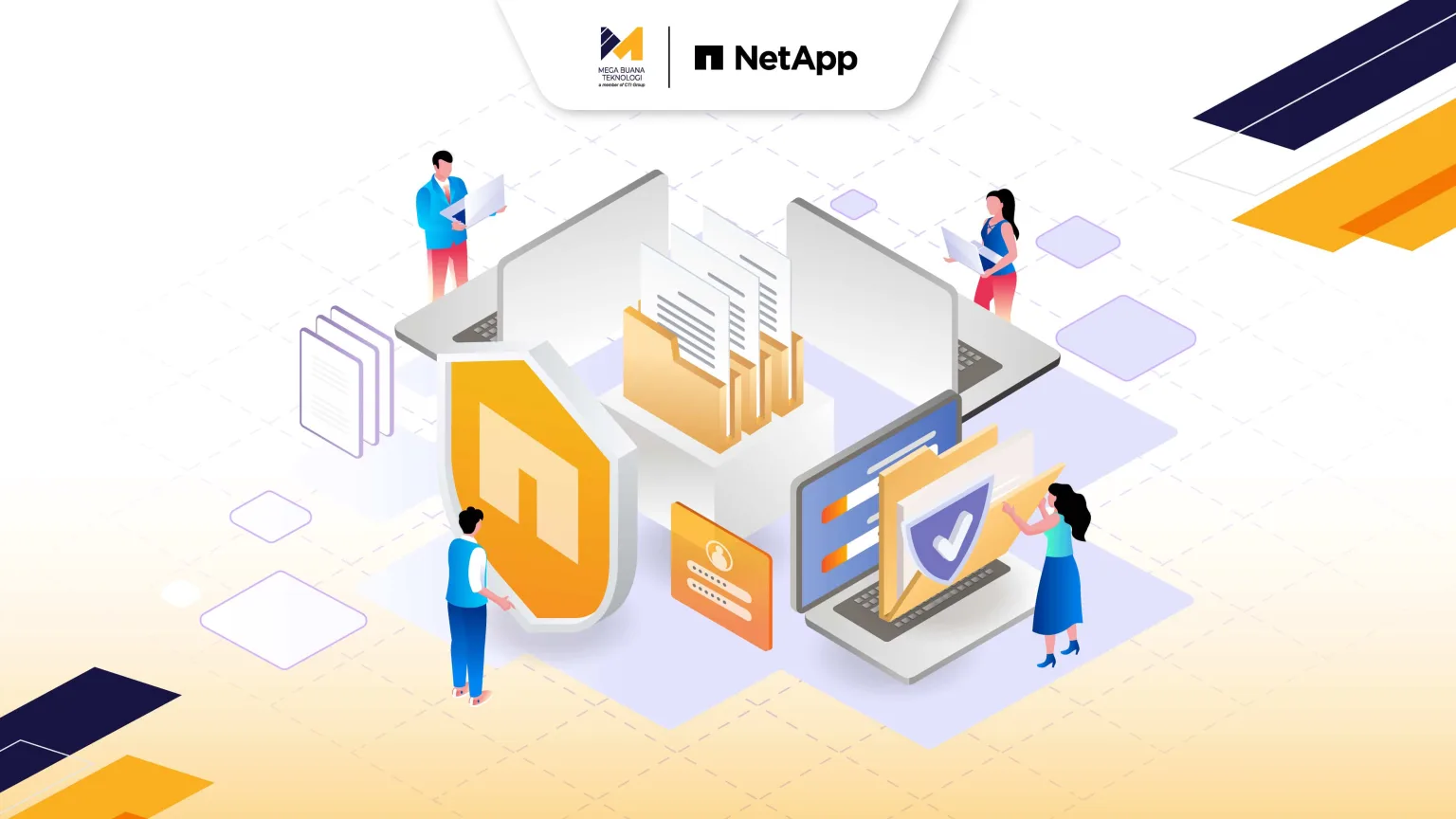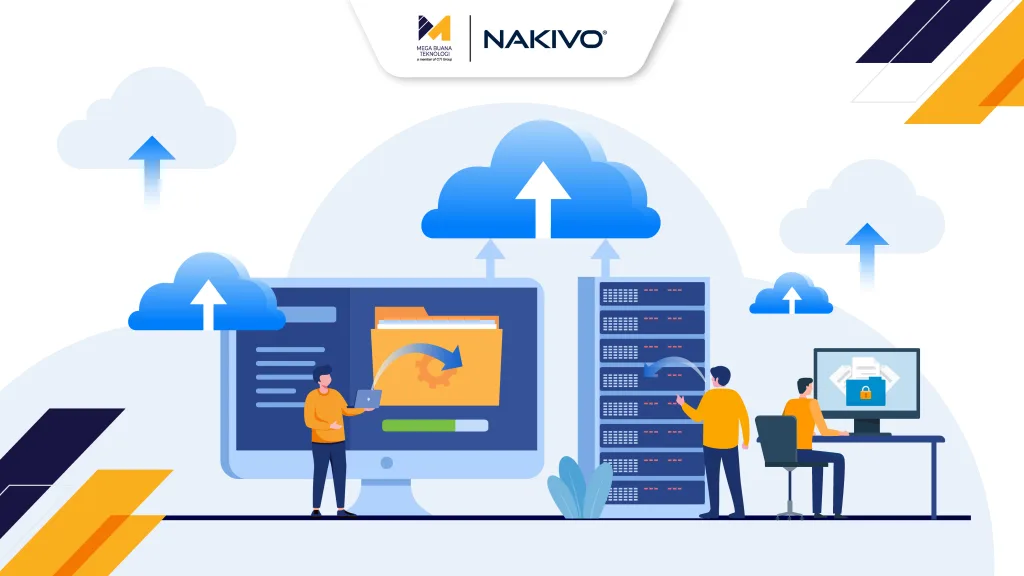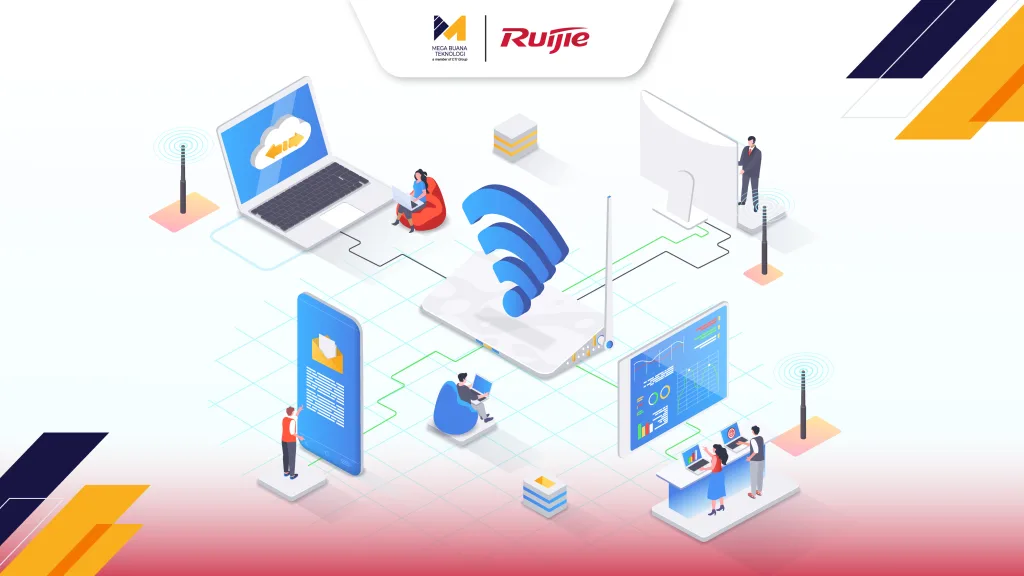In an era where cyber threats evolve at breakneck speed, having weak data protection and privacy is not just reckless, it can be catastrophic for businesses. According to a NetApp report, ransomware attacks have become the most destructive threat, directly impacting business continuity. Data shows that over 60 percent of global companies have experienced a ransomware attack, with recovery costs extending beyond financial loss to include operational downtime and permanently damaged reputation.
NetApp emphasizes that without a proactive protection and detection strategy, ransomware can encrypt thousands of files in a matter of minutes. This fact underscores that robust data protection and strict security management are no longer an option, but an urgent necessity for every company.
An effective protection and privacy strategy must include data lifecycle management, access controls, encryption, backup and recovery, as well as comprehensive risk management. With zero-trust architecture, tokenization, and modern defense mechanisms, sensitive information stays secure from both internal and external threats.
What is Data Protection and Privacy & Why Does It Matter?
Data protection involves the technical and organizational measures, such as encryption, backups, access controls to safeguard data from unauthorized access, loss, or corruption. Meanwhile data privacy focuses on ensuring that personal data is handled according to established rights, consent, and regulatory expectations. Together, these pillars help maintain data integrity, ensure compliance, foster user trust, and protect organizations from reputation damage and costly breaches.
Definition and Difference Between Data Protection vs Data Privacy
As explain above, data protection is about how data is secured that refers to the mechanisms and processes, such as encryption, secure storage, and access control to prevent unauthorized access, data loss, or breaches. Meanwhile, data privacy involves defining what data should be collected, who can access it, why it’s used, and ensuring it aligns with user consent and legal frameworks. It is inherently a legal and policy-oriented concept. Data privacy sets the guidelines and permissible user of data, while data protection implements the technical safeguards that honor those guidelines.
Threats and Risks Without Adequate Protection
In digital era, organizations facing ransomware threats that cost millions in recovery costs and many opting to pay ransoms. Operational vulnerability such as zero-day exploit serves as gateways for ransomware attack that facilitating widespread compromise. A failure to implement robust data protection mechanism can lead to data breaches with serious operational, legal, and financial ramifications.
Regulatory Compliance & Global Standards
Data protection and privacy are mandatory to fulfil regulatory compliance and global standards. Compliance ensures not only legal adherence but also builds consumer trust and provides a foundation for data protection strategies to operate effectively. GDPR in Europe mandates principles such as data protection by design and by default, CCPA provide legal frameworks for how personal data must be manage, and UU PDP regulates how organizations store and process data.
Examples of Data Privacy and Protection Practices
Effective data privacy and protection require multi-layered and proactive strategy. Here are several key practices that organizations can adopt to reinforce data privacy and protection:
- Data inventory and minimization: maintain a clear record of what data is collected, stored, and processed.
- Encryption and access control: implement strong encryption for data at rest and in transit, coupled with role-based access control and multi-factor authentication to ensure only authorized users can access sensitive data.
- Immutable backups and object locking: employ immutable backups or object-lock mechanisms to guard against ransomware, insider threats, or accidental modifications.
- Automated Disaster Recovery with Snapshot tools: enable rapid recovery of data or systems in the event of a ransomware attack or system failure, ensuring business continuity and minimizing downtime.
Ransomware Protection with Immutable Backups
Immutable backups are data copies that, once written, cannot be modified or deleted for a defined period. This approach is critical for ensuring data integrity, regulatory compliance, and resilience against ransomware attacks; even if attackers gain access, they cannot corrupt these backups.
Automated Disaster Recovery with SnapMirror
Tools such as SnapLock from NetApp offer logical air-gapped backup solutions that remain isolated and immutable, preventing deletion even by administrators. This capability enables rapid system recovery and protects against both external ransomware threats and internal mishaps.
Encryption & Access Control in Modern Infrastructure
Modern data protection strategies strongly emphasize encryption, both at rest and in transit with strict access controls. Techniques such as Role-Based Access Control (RBAC), Multi-Factor Authentication (MFA), and secure key management help enforce data confidentiality and integrity across cloud, on-premises, and hybrid environments.
Data Protection and Privacy Trends
Understanding emerging developments in data protection and privacy is essential to help organizations navigating today’s complex cybersecurity and regulatory landscape. Trend such as rising cyber threats, the rise of hybrid cloud environments, and the adoption of zero trust and automation strategies are reshaping how businesses safeguard sensitive information.
Escalating Cyber Threats
The current threat environment is increasingly sophisticated and relentless. Organizations are facing a barrage of attacks, including ransomware, AI-driven threats, and supply chain targeting that highlight the need for stronger defenses. Notably, ransomware-as-a-service is proliferating, enabling attacks by groups with minimal resources and resulting in high costs and prolonged recovery times. This constant barrage of threats reinforces the importance of incorporating advanced data protection mechanisms, such as immutable backups, redundancy, and robust disaster recovery that preserve data integrity and availability amid escalating attacks.
According to the latest cybersecurity report, Indonesia is one of the countries with the highest number of digital attacks in Southeast Asia. Hundreds of millions of attempted attacks are recorded annually, ranging from malware, phishing, to ransomware that target the government, financial, and public service sectors. This surge in attacks confirms that threats are not only becoming more frequent, but also more structured, exploiting even the smallest security gaps.
Shift to Hybrid Cloud and Security Challenges
With the growing adoption of hybrid and multi-cloud setups, organizations now confront increased complexity in data protection. Misconfigurations such as unsecured cloud storage or permissive APIs have emerged as leading causes of breaches. Moreover, hybrid environments often suffer from inadequate visibility and fragmented security tools, making it difficult to enforce consistent controls and monitor threats effectively. This underscores the need for integrated data protection strategies across hybrid infrastructures, including secure backups, encrypted communications, and unified visibility, to ensure resilience and regulatory compliance.
Zero Trust & Automation as Core Strategies
To counter both rising threats and the complexity of distributed environments, organizations are increasingly embracing zero trust architectures and automation. Zero Trust models operate on the principle of “never trust, always verify”, using techniques such as micro-segmentation, continuous authentication, and behavioral analytics to minimize attack surfaces. Simultaneously, automation especially AI-driven security tools being deployed to monitor systems in real time, detect anomalies, and respond rapidly to incidents. This improves efficiency and bolsters defenses against evolving attacks.
Read More: Hybrid Cloud Storage: A Smarter Way to Manage Data in the Digital Era
NetApp Ransomware Protection
NetApp Ransomware Protection is the premier solution for data protection and privacy that delivers a robust and unified strategy to safeguard sensitive data. The solution ensuring integrity, availability, and privacy through advanced, built-in technologies layered directly at the storage level.
Protection Strategies: Immutable Backup, DR, and Monitoring
NetApp employs immutable and indelible backups through technologies like Snapshot copies and SnapLock, which lock down data in a tamper-proof manner and enforce write-once, rad-many retention policies. This enables recovery from trusted backup points that cannot be altered or removed, even during a ransomware crisis.
With logically air-gapped cyber vaulting, NetApp isolates critical backups in secure, highly controlled environments. These isolated repositories are protected with strict access controls and are designed for rapid restoration to ensure business continuity, even in severe ransomware scenarios.
NetApp’ AI-driven Autonomous Ransomware Protection (ARP) operates natively in storage, continuously monitoring file activity to detect anomalies such as unusual entropy, file extensions, or high IOPS. It initiates protective snapshots automatically and delivers real-time alerts with a AAA rating for precision and reliability.
BlueXP ransomware protection further enhances this by providing a centralized console that identifies critical workloads, applies protection policies, and orchestrates snapshot creation when threats are detected automatically and with one click.
Business Benefit: Fast Recovery, Data Security, and Regulatory Compliance
NetApp’s snapshot-based recovery model and cyber vault enable organizations to restore data within minutes, significantly reducing downtime and avoiding the heavy costs associated with extended outages. By combining immutable backups, logical air-gapping, and real-time AI detection, NetApp ensures data remains secure; even during advanced ransomware attacks.
The platform’s built-in, multi-layered approach functions as a powerful last line of defense at the data source. Technologies such as SnapLock (WORM) and Multi-Admin Verification (MAV) not only enhance security but also support compliance with data retention and integrity regulation. Moreover, centralized policies via BlueXP facilitate governance and audit-readiness.
NetApp Data Protection and Privacy Solutions from MBT
Mega Buana Teknologi (MBT) as part of CTI Group, is ready to support your business in safeguarding data and privacy. As an official NetApp partner, MBT provides end-to-end services, from consultation and architecture planning to full implementation across on-premises, cloud, and hybrid environments. Get in touch with our team today to start your data protection and privacy with more efficient and future-ready.
Author: Ervina Anggraini – Content Writer CTI Group




